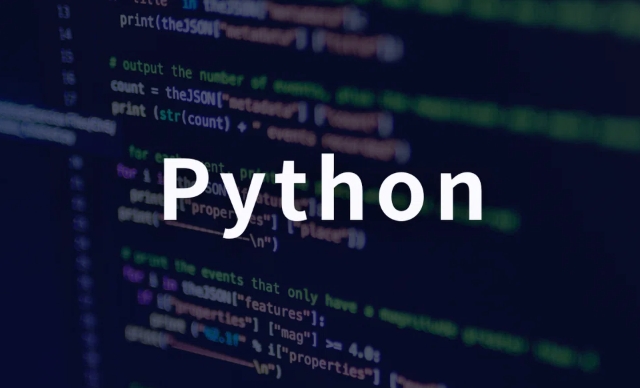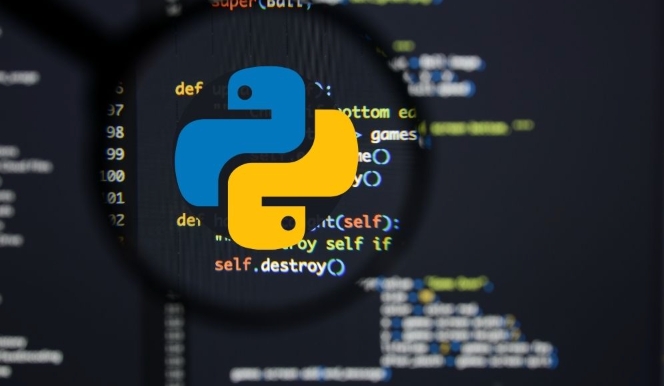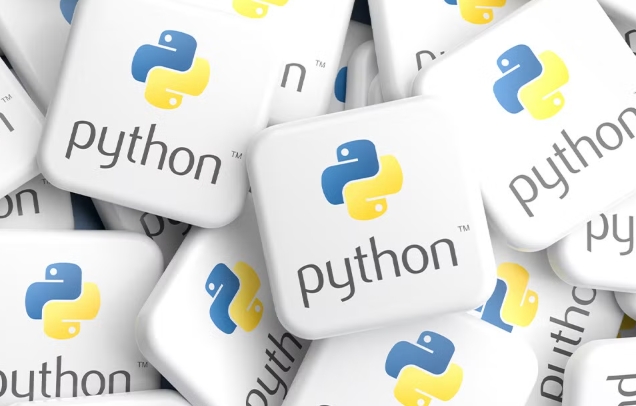Python Function Arguments and Parameters
Jul 04, 2025 am 03:26 AMParameters are placeholders when defining a function, while arguments are specific values ??passed in when calling. 1. Position parameters need to be passed in order, and incorrect order will lead to errors in the result; 2. Keyword parameters are specified by parameter names, which can change the order and improve readability; 3. Default parameter values ??are assigned when defined to avoid duplicate code, but variable objects should be avoided as default values; 4. args and *kwargs can handle uncertain number of parameters and are suitable for general interfaces or decorators, but should be used with caution to maintain readability.

When writing Python functions, parameters and arguments are often a bit confusing, especially when I first started learning. In fact, figuring out the differences and usage between them is very helpful for writing flexible and clear functions.

Position parameters are the most basic usage
The parameters written when defining a function are "parameters", and the values ??passed in when calling the function are "arguments". for example:

def greet(name, message):
print(f"{message}, {name}!")
greet("Alice", "Hello") Here name and message are parameters, while "Alice" and "Hello" are the actual parameters passed. The order is very important, and if you reverse it, the result may be wrong.
A common mistake is to confuse the parameter order, especially when the parameter names are not very intuitive. It is recommended to give a better name, not use a, b, and c, as it is easy to make mistakes.

Keyword parameters make calls clearer
When calling a function, you can use keywords to specify the parameter name, so that even if the order changes, the result will not be affected:
greet(name="Bob", message="Hi") # equivalent to greet("Bob", "Hi")This method is particularly suitable for situations where there are many parameters or some parameters have default values. It allows you to see which value corresponds to which parameter at a glance, improving code readability.
The benefits of using keyword parameters include:
- It's easier to understand: others will know what you're setting up at a glance
- You can skip parameters with default values
- Adjustment order does not affect execution results
But don't abuse it. If you write too long keywords, you will lose money if you want.
Default parameter values ??simplify common scenarios
Set a default value for the parameters, and in many cases you can write less duplicate code:
def greet(name, message="Hello"):
print(f"{message}, {name}!")
greet("Tom") # Use default values ??greet("Tom", "Hey") # Override default valuesThis technique is very practical, but a few things to note:
- The default value is only calculated once when defining a function. Do not use mutable objects (such as lists or dictionaries) as the default value.
- Put the commonly used parameters in front, put the uncommonly used parameters behind and set the default value
- If multiple parameters have default values, try to sort them in logical order
For example, be careful when writing the following:
def add_item(item, lst=[]): # This is not recommended to write lst.append(item)
return lstBecause the default list will only be created once, multiple calls will share the same list, which may lead to unexpected behavior.
*args and **kwargs handle uncertain number of parameters
Sometimes you don’t know how many parameters you want to pass. At this time, you can use *args and **kwargs to handle any number of positional parameters and keyword parameters.
def print_args(*args, **kwargs):
print("Positional:", args)
print("Keyword:", kwargs)
print_args(1, 2, name="Alice", age=30)This writing method is often used to encapsulate functions, decorators, or general interfaces. The advantage is that it can accept various inputs without reporting errors.
But also note:
- Try to avoid overuse in the end user interface, otherwise readability will decrease
- Use fixed parameters in clear cases
- Adding type prompts to
*argsand**kwargscan help maintain
Basically that's it. The parameters part looks simple, but if used properly, it can make the function both flexible and clear. On the other hand, if used randomly, it is easy to write confusing code.
The above is the detailed content of Python Function Arguments and Parameters. For more information, please follow other related articles on the PHP Chinese website!

Hot AI Tools

Undress AI Tool
Undress images for free

Undresser.AI Undress
AI-powered app for creating realistic nude photos

AI Clothes Remover
Online AI tool for removing clothes from photos.

Clothoff.io
AI clothes remover

Video Face Swap
Swap faces in any video effortlessly with our completely free AI face swap tool!

Hot Article

Hot Tools

Notepad++7.3.1
Easy-to-use and free code editor

SublimeText3 Chinese version
Chinese version, very easy to use

Zend Studio 13.0.1
Powerful PHP integrated development environment

Dreamweaver CS6
Visual web development tools

SublimeText3 Mac version
God-level code editing software (SublimeText3)

Hot Topics
 Polymorphism in python classes
Jul 05, 2025 am 02:58 AM
Polymorphism in python classes
Jul 05, 2025 am 02:58 AM
Polymorphism is a core concept in Python object-oriented programming, referring to "one interface, multiple implementations", allowing for unified processing of different types of objects. 1. Polymorphism is implemented through method rewriting. Subclasses can redefine parent class methods. For example, the spoke() method of Animal class has different implementations in Dog and Cat subclasses. 2. The practical uses of polymorphism include simplifying the code structure and enhancing scalability, such as calling the draw() method uniformly in the graphical drawing program, or handling the common behavior of different characters in game development. 3. Python implementation polymorphism needs to satisfy: the parent class defines a method, and the child class overrides the method, but does not require inheritance of the same parent class. As long as the object implements the same method, this is called the "duck type". 4. Things to note include the maintenance
 2025 quantitative trading skills: Python's automatic brick-moving strategy, making a daily profit of 5% as stable as a dog!
Jul 03, 2025 am 10:27 AM
2025 quantitative trading skills: Python's automatic brick-moving strategy, making a daily profit of 5% as stable as a dog!
Jul 03, 2025 am 10:27 AM
The digital asset market attracts global attention with its high volatility. In this environment, how to steadily capture returns has become the goal pursued by countless participants. Quantitative trading, with its dependence on data and algorithm-driven characteristics, is becoming a powerful tool to deal with market challenges. Especially in 2025, this time node full of infinite possibilities is combined with the powerful programming language Python to build an automated "brick-moving" strategy, that is, to use the tiny price spreads between different trading platforms for arbitrage, which is considered a potential way to achieve efficient and stable profits.
 Python `@classmethod` decorator explained
Jul 04, 2025 am 03:26 AM
Python `@classmethod` decorator explained
Jul 04, 2025 am 03:26 AM
A class method is a method defined in Python through the @classmethod decorator. Its first parameter is the class itself (cls), which is used to access or modify the class state. It can be called through a class or instance, which affects the entire class rather than a specific instance; for example, in the Person class, the show_count() method counts the number of objects created; when defining a class method, you need to use the @classmethod decorator and name the first parameter cls, such as the change_var(new_value) method to modify class variables; the class method is different from the instance method (self parameter) and static method (no automatic parameters), and is suitable for factory methods, alternative constructors, and management of class variables. Common uses include:
 Understanding the Performance Differences Between Golang and Python for Web APIs
Jul 03, 2025 am 02:40 AM
Understanding the Performance Differences Between Golang and Python for Web APIs
Jul 03, 2025 am 02:40 AM
Golangofferssuperiorperformance,nativeconcurrencyviagoroutines,andefficientresourceusage,makingitidealforhigh-traffic,low-latencyAPIs;2.Python,whileslowerduetointerpretationandtheGIL,provideseasierdevelopment,arichecosystem,andisbettersuitedforI/O-bo
 Python Function Arguments and Parameters
Jul 04, 2025 am 03:26 AM
Python Function Arguments and Parameters
Jul 04, 2025 am 03:26 AM
Parameters are placeholders when defining a function, while arguments are specific values ??passed in when calling. 1. Position parameters need to be passed in order, and incorrect order will lead to errors in the result; 2. Keyword parameters are specified by parameter names, which can change the order and improve readability; 3. Default parameter values ??are assigned when defined to avoid duplicate code, but variable objects should be avoided as default values; 4. args and *kwargs can handle uncertain number of parameters and are suitable for general interfaces or decorators, but should be used with caution to maintain readability.
 Strategies for Integrating Golang Services with Existing Python Infrastructure
Jul 02, 2025 pm 04:39 PM
Strategies for Integrating Golang Services with Existing Python Infrastructure
Jul 02, 2025 pm 04:39 PM
TointegrateGolangserviceswithexistingPythoninfrastructure,useRESTAPIsorgRPCforinter-servicecommunication,allowingGoandPythonappstointeractseamlesslythroughstandardizedprotocols.1.UseRESTAPIs(viaframeworkslikeGininGoandFlaskinPython)orgRPC(withProtoco
 Describe Python garbage collection in Python.
Jul 03, 2025 am 02:07 AM
Describe Python garbage collection in Python.
Jul 03, 2025 am 02:07 AM
Python's garbage collection mechanism automatically manages memory through reference counting and periodic garbage collection. Its core method is reference counting, which immediately releases memory when the number of references of an object is zero; but it cannot handle circular references, so a garbage collection module (gc) is introduced to detect and clean the loop. Garbage collection is usually triggered when the reference count decreases during program operation, the allocation and release difference exceeds the threshold, or when gc.collect() is called manually. Users can turn off automatic recycling through gc.disable(), manually execute gc.collect(), and adjust thresholds to achieve control through gc.set_threshold(). Not all objects participate in loop recycling. If objects that do not contain references are processed by reference counting, it is built-in
 Explain Python generators and iterators.
Jul 05, 2025 am 02:55 AM
Explain Python generators and iterators.
Jul 05, 2025 am 02:55 AM
Iterators are objects that implement __iter__() and __next__() methods. The generator is a simplified version of iterators, which automatically implement these methods through the yield keyword. 1. The iterator returns an element every time he calls next() and throws a StopIteration exception when there are no more elements. 2. The generator uses function definition to generate data on demand, saving memory and supporting infinite sequences. 3. Use iterators when processing existing sets, use a generator when dynamically generating big data or lazy evaluation, such as loading line by line when reading large files. Note: Iterable objects such as lists are not iterators. They need to be recreated after the iterator reaches its end, and the generator can only traverse it once.






